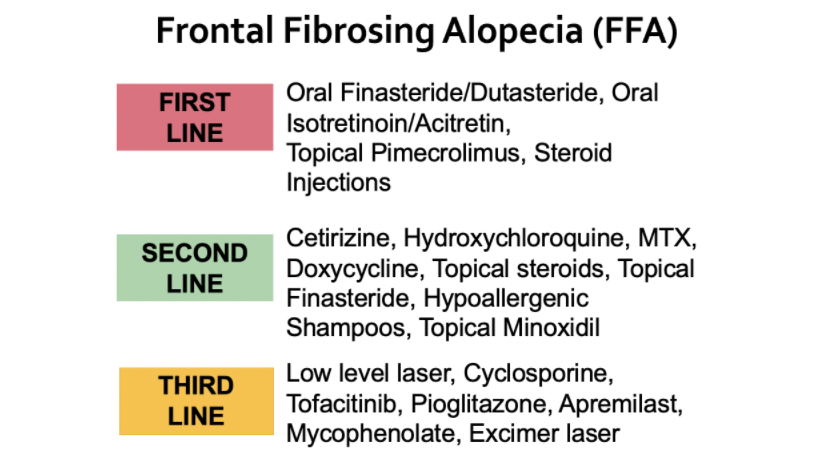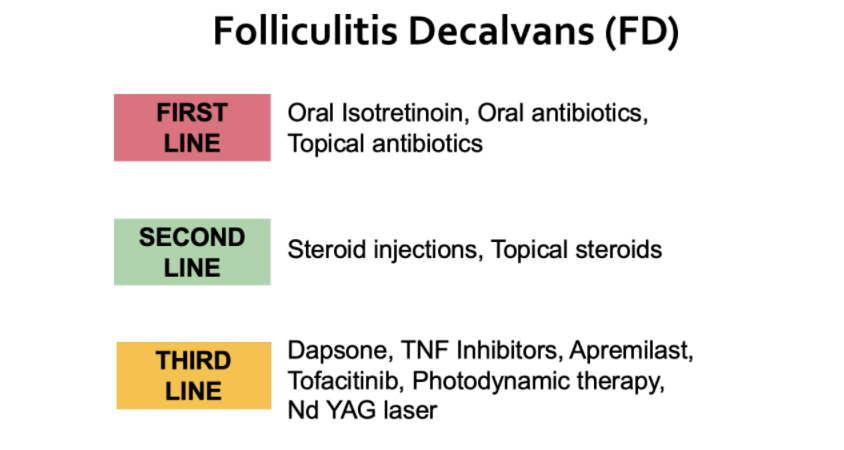The purpose of the Whistler Scarring Alopecia Program is to bring world class care to patients affected by scarring hair loss and to research new, and more effective treatments. The Whistler Scarring Alopecia Program sees patients around the world with cicatricial or scarring alopecia. This includes men, women and children with conditions including
lichen planopilaris
frontal fibrosing alopecia
central centrifugal alopecia
discoid lupus
folliulitis decalvans
dissecting cellulitis
The Scarring Alopecia Program sees patients with some of the most challenging types of hair loss from around the world. Many of our recent publications are shown below. We have provided care to over 2000 patients with scarring alopecia in the last 4 years alone.Download: Top 25 Frequently Asked Questions about Scarring Alopecia
Donovan JC. Graham Little Syndrome associated with Androgen Insensitivity. International Journal of Dermatology. 2015
Donovan JC. Dissecting Cellulitis following Interferon Beta 1a Treatment and Scalp Trauma. In Press. 2015.
Dang M and Donovan J. "Pruritic Area of Hair Loss". Canadian Journal of Diagnosis. January 2015
Spano F and Donovan JC. "Efficacy of oral retinoids in treatment resistant lichen planopilaris". Journal of the American Academy of Dermatology. November 2014
Perrin AJ and Donovan JC. "Lichen planopilaris following whole brain irradiation". Int J Dermatol. Jun 5, 2014
Montpellier RA and Donovan JC. "Scalp trauma: a risk factor for lichen planopilaris?" J Cutan Med Surg. May/June 2014
Baibergenova A and Donovan JC. "Lichen planopilaris: Update on Pathogenesis and Treatment. SkinMed. May/June 2013
Donovan JC and Mirmirani P. "Transversely sectioned biopsies in the diagnosis of end stage traction alopecia" Dermatology Online Journal. April 2013
Donovan JC. "Lichen Planopilaris following Hair Transplantation: Report of 17 Cases". Dermatologic Surgery. December 2012
Donovan JC. “Scarring (Cicatricial) Alopecia: Simple Approach to Diagnosis and Treatment in 2011". Biologics in Dermatology. July 2011
Donovan JC, Samrao A, Ruben BS and Price V. “Eyebrow Regrowth in Frontal Fibrosing Alopecia Patients Treated with Intralesional Triamcinolone Acetonide" British Journal of Dermatology. November 2010
Donovan JC, Ghazarian D and Shaw JC. "Scarring Alopecia associated with the Use of Gefitinib”. Archives of Dermatology. November 2008
Scarring alopecia refers to a group of conditions that that lead to permanent hair loss. The cause of any of the scarring hair loss conditions is not known although overactivity of the immune system does appear to be a common factor in all the scarring alopecias.
Examples of scarring alopecias include
Lichen planopilaris (or "LPP" for short) a form of scarring alopecia. Although scarring hair loss conditions themselves are uncommon, LPP is one of the more common types of scarring alopecia. Adults of all ethnic backgrounds. Women are more commonly affected than men. Like all scarring hair conditions, the cause remains unknown. See more articles by Dr Donovan on LPP
What treatments do we use for LPP in the Whistler Scarring Alopecia Program?
Dr Donovan treats LPP with up to date treatments, including the first, second and third line agents reviewed here :


2. Frontal fibrosing alopecia (FFA)
FFA mainly affects women. Hair loss may occur in the frontal hairline, sides & back off the scalp, eyebrows, eyelashes and body hair. Post menopausal women are most likely to develop this condition. Many patients have no symptoms. See more articles by Dr Donovan on FFA.
What treatments do we use for FFA in the Whistler Scarring Alopecia Program?
Dr Donovan treats FFA with up to date treatments, including the first, second and third line agents reviewed here :

3. Central centrifugal cicatricial alopecia (CCCA)
CCCA mainly affects women with afro-textured hair. The conditions starts in the mid-to-late 30s. Affected individuals often are asymptomatic but have slight itching or burning in the central area of crown. Further hair loss develops as the balding moves outwards over time. See more articles by Dr Donovan on CCCA.
What treatments do we use for CCCA in the Whistler Scarring Alopecia Program?
Dr Donovan treats CCCA with up to date treatments, including the first, second and third line agents reviewed here :

4. Discoid lupus erythematosus (DLE)
Discoid lupus (short form: “DLE”) is a type of hair loss that professes to areas of permanent hair loss. Patients initially develop itchy bumps in the scalp - some of which resolve but some of which resolve with scarring and hair loss. Unlike most of the other types of scarring hair loss, patients with DLE do need to be monitored for an illness known as systemic lupus erythematosus. Read more.
What treatments do we use for DLE in the Whistler Scarring Alopecia Program?
Dr Donovan treats DLE with up to date treatments, including the first, second and third line agents reviewed here :

5. Pseudopelade of Brocq (PPB)
PPB is a type of scarring alopecia that affects both males and females (3 times more common in females). Several features lead to this diagnosis, including areas of scarring, rarely pinky-red colour around the hair follicles, depression of the skin (called atrophy), and findings on the biopsy showed very little inflammation, loss of the fat glands and scarring. See more articles by Dr Donovan on PPB
What treatments do we use for PPB in the Whistler Scarring Alopecia Program?
Dr Donovan treats PPB with up to date treatments, including the first, second and third line agents reviewed here :

Individuals with folliculitis decalvans often develop itching in the scalp and sometimes burning too. Men and women are both affected. Hair loss often begins in the top of the head with 'pimples' and 'bumps'. See more articles by Dr Donovan on folliculitis decalvans
What treatments do we use for Folliculitis decalvans in the Whistler Scarring Alopecia Program?
Dr Donovan treats Folliculitis decalvans with up to date treatments, including the first, second and third line agents reviewed here :.

7. Dissecting Cellulitis (DSC)
DSC is a rare condition. Black & hispanic men in the 20s and 30s are typically affected and first report pustules and soft boggy nodules on the scalp that drain blood and pus. Some individuals also develop boil-like lesion in the armpit or groin and some will develop severe acne-like lesions. READ MORE.
What treatments do we use for DSC in the Whistler Scarring Alopecia Program?
Dr Donovan treats DSC with up to date treatments, including the first, second and third line agents reviewed here :

To make an appointment, simply contact us.